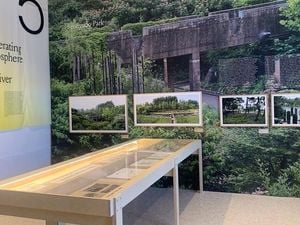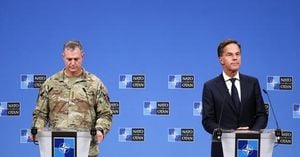With the curtain raised on the COP29 Climate Change Conference held recently in Baku, the buzz centered around two major themes: the need for urgent action against climate change and the emphasis on increasing youth engagement to formulate potent climate strategies. This year’s gathering illustrated both the painstaking realities of global climate management and the creative expressions calling for action, as representatives from nations around the world convened to negotiate climate-centered initiatives.
At the forefront of the discussions was the alarming data presented by Climate Trace, co-founded by former U.S. Vice President Al Gore. The findings indicated significant emissions from urban centers, identifying Shanghai as the leading source of greenhouse gases globally. At the conference, Gore remarked, “One of the sites in the Permian Basin in Texas is by far the No. 1 worst polluting site in the entire world,” bringing attention to localized pollution issues amid broader international discussions.
This potent data underlined frustrations felt by many attending the conference, particularly as delegates deliberated on actionable commitment to reduce fossil fuel reliance. Nations at the COP meeting expressed diverse perspectives on emission targets and financial support needed for lower-income countries to combat climate challenges.
Compounding the urgency of these discussions was the backdrop of rising global temperatures and other alarming environmental trends. Last year, greenhouse gas emissions increased by 0.7% globally, with methane rates climbing even higher—prompting calls for innovative solutions and collaborative strategies across various sectors of society.
Alongside the formal discussions, events promoting artistic expression highlighted youth perspectives on environmental issues. One of those was the Children's Eyes on Earth photo contest, which drew over 3,000 entries from children worldwide. This competition, under the theme “I Love Nature, I Fear Pollution,” aimed to amplify young voices, spotlighting their vision of the climate crisis through photography. Winners hailing from the Philippines, Sri Lanka, and Malta exhibited poignant pieces reflecting their thoughts on pollution and climate change, showcasing how deeply these issues resonate with younger generations.
The prominence of youth engagement at COP29 was underscored by calls from experts and advocates alike, emphasizing the demographic's importance to impactful climate action. Notably, Majed Al-Qatari highlighted how exclusion of under-30s from meaningful climate policy decisions could hinder effective management of climate issues. Recent statistics from UNICEF showed about one billion children at extremely high risk due to climate change, bringing the necessity of their involvement to the forefront.
During the conference, other compelling initiatives emerged, such as panel discussions focusing on the intersection of artificial intelligence and sustainable economic practices. Azerbaijan’s Ministry of Economy organized talks exploring AI's potential to predict economic crises and optimize resource management, drawing important links between technology, economic resilience, and climate action.
A notable exhibition at the conference featured sustainable carpets made from eco-friendly materials by local artisans. These pieces, showcasing Azerbaijan’s rich cultural heritage, also served as potent reminders of the nation's commitment to sustainability and environmental awareness. One carpet, “Woven Stripes,” mirrored global temperature trends visually, creatively framing the local artwork within the larger narrative of climate change's impact.
Conversations about equitable resource access and how technology can advance climate resilience permeated the conference. A panel explored how small-to-medium enterprises could spearhead transitions to green economies, integrating responsible practices within communities to combat climate change.
Another unique development at COP29 was Azerbaijan's initiative to use Caspian Sea water for sustainable solutions, demonstrating how localized efforts could bolster the nation’s commitment to addressing water scarcity and other climate-related challenges. The pressing utility of Caspian water reflects not just immediate environmental needs but also broader regional responsibilities toward sustainable practices.
While debates surrounding fossil fuel dependencies surfaced sharply, the conference also spotlighted broader outreach efforts. An analysis revealed over 1,700 fossil fuel lobbyists registered at COP29, raising concerns about the influence of vested interests on climate policy. Former Secretary-General Ban Ki-moon and other prominent figures emphasized the urgent need for substantial reform within the climate talk frameworks, warning against the process becoming overly controlled by fossil fuel stakeholders.
Yet, there remained optimism as activists and advocates continued to rally for reform and greater inclusivity within climate policies. The emphasis on youth involvement was deemed by many to be not just necessary, but also transformative—a factor likely to drive progress if fully embraced.
The dual nature of COP29—thoughtful deliberation coupled with strong public representation—demonstrated the complexity of modern climate negotiations and the intertwined roles of activism, art, and policy dialogue. The outcomes from Baku will undoubtedly shape future discussions, emphasizing the indispensable nature of every voice—especially those of the youth—to usher in effective climate solutions.



